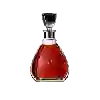
Winery Vall de PintesBanyuls Blanc
This wine generally goes well with
Details and technical informations about Winery Vall de Pintes's Banyuls Blanc.
Discover the grape variety: Ugni
Ugni blanc is a grape variety originating from Italy. It produces a variety of grape specially used for the elaboration of wine. It is rare to find this grape to eat on our tables. This variety of grape is characterized by large bunches and small to medium sized grapes. Ugni blanc can be found in many vineyards: South West, Cognac, Bordeaux, Provence & Corsica, Rhone valley, Languedoc & Roussillon, Armagnac, Loire valley, Savoie & Bugey, Beaujolais.
Informations about the Winery Vall de Pintes
The Winery Vall de Pintes is one of wineries to follow in Banyuls.. It offers 3 wines for sale in the of Banyuls to come and discover on site or to buy online.
The wine region of Banyuls
Banyuls wines come from the South-eastern Part of Roussillon, in the south of France, in the lower Pyrenees, a few kilometres from the Spanish border. These naturally Sweet wines are consumed both as an aperitif and as a dessert. They come in a wide range of hues, from GoldenGreen (Banyuls Blanc) to Amber (Banyuls Ambré) to the intense garnet of the standard Banyuls Rouge. Unusually among the natural sweet wines of France, all Banyuls wines are made primarily from Grenache grapes of various colors.
The wine region of Languedoc-Roussillon
Languedoc (formerly Coteaux du Languedoc) is a key appellation used in the Languedoc-Roussillon wine region of southern France. It covers Dry table wines of all three colors (red, white and rosé) from the entire region, but leaves Sweet and Sparkling wines to other more specialized appellations. About 75% of all Languedoc wines are red, with the remaining 25% split roughly down the middle between whites and rosés. The appellation covers most of the Languedoc region and almost a third of all the vineyards in France.
News related to this wine
Top Roussillon wines: 15 to discover
The Roussillon is home to a range of wine styles, at varying price points. Sweet fortified wines (vin doux naturel) used to dominate production, with still dry wines (vin sec) in the minority. In the last 30 years, however, this has completely changed, and vin sec now makes up the majority (80%) of the Roussillon’s output. The recent Wines of Roussillon tasting, held in London, not only highlighted many good quality dry wines being produced, but also cemented the idea that Roussillon whites are ...
Top Roussillon wines: 15 to discover
The Roussillon is home to a range of wine styles, at varying price points. Sweet fortified wines (vin doux naturel) used to dominate production, with still dry wines (vin sec) in the minority. In the last 30 years, however, this has completely changed, and vin sec now makes up the majority (80%) of the Roussillon’s output. The recent Wines of Roussillon tasting, held in London, not only highlighted many good quality dry wines being produced, but also cemented the idea that Roussillon whites are ...
France forecasts stable 2023 wine harvest
National production from France’s wine harvest in 2023 has been estimated between 44 million and 47 million hectolitres this year, up from 45.4 million hectolitres in 2022. That would be in line with, or exceed, the five-year average. France appears to be doing better than Italy and Spain, which expect below-average volumes. Still, the French agriculture ministry emphasised the preliminary nature of its forecast, citing uncertainty around damage from downy mildew in Bordeaux and southwest ...
The word of the wine: Malolactic fermentation
Called second fermentation or malo for short. It is the degradation (under the effect of bacteria) of the malic acid naturally present in the wine into milder, less aggressive lactic acid. Some producers or wineries refuse this operation by "blocking the malo" (by cold and adding SO2) to keep a maximum of acidity which carries the aromas and accentuates the sensation of freshness.











